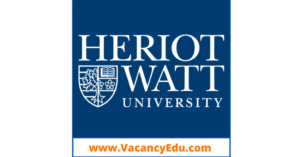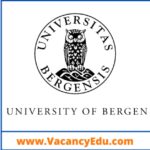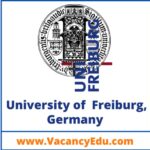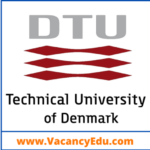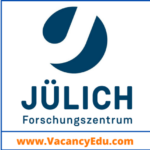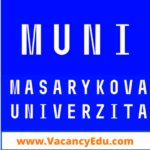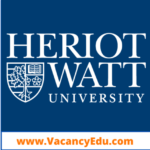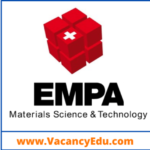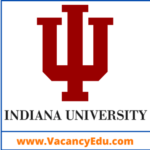Heriot-Watt University, Edinburgh, United Kingdom invites online Application for various Postdoctoral Fellowship in their different Departments. We are providing a list of Postdoc Fellowship positions available at Heriot-Watt University, Edinburgh, United Kingdom.
Eligible candidate may Apply as soon as possible.
(01) Postdoctoral Fellowship Position
Postdoc Fellowship Position summary/title: Research Associate on Enabling CO2 storage using Artificial Intelligence
Deadline : 31st August 2025.
(02) Postdoctoral Fellowship Position
Postdoc summary/title: Research Associate in Advanced Platform for Integrated Quantum Photonics Devices
The Quantum Photonics Laboratory seeks a talented and motivated scientist to start a new line of research on integrated platforms for novel quantum devices using rare-earth doped crystals for quantum memory applications. Significant goals include
- the characterization of the optical/spin properties of different crystals,
- manipulation and optimization of their electronic and spin coherence through complex optical and MW sequences,
- implementation of quantum memory protocols in both bulk crystals and waveguide structures,
- integration of MW circuits.
The project is expected to lead to high impact scientific publications and to technological developments related to integrated quantum photonic devices for quantum communication and computation. The work will be conducted in the framework of a recently funded EPSRC grant involving world-leading partners working on waveguide fabrication and electrical engineering. It will be carried out under the supervision of Prof Margherita Mazzera, who is principal investigator of the funded project.
For more information, please send enquiry emails to Prof Margherita Mazzera (m.mazzera@hw.ac.uk).
The application requires a CV and a cover letter explaining the motivation/interest in this project to be submitted through the university portal. Candidates are invited to specifically highlight in their applications how they fulfil the essential criteria for the post, listed below.
Deadline : 09/01/2025
Looking for more Postdoctoral Positions Click Here
(03) Postdoctoral Fellowship Position
Postdoc Fellowship Position summary/title: Research Assistant/Associate in Miniaturised Device Manufacturing
The Smart Systems Research Group led by Prof. Marc Desmulliez at the Research Institute of Sensors, Signals and Systems (ISSS) within the School of Engineering & Physical Sciences (EPS) at Heriot-Watt University (HWU) has a long research collaboration spanning 6 years with the VOILA Laboratory led by Prof. Maria Ignazio Viola at the University of Edinburgh (UoE).
Early January, both Professors received funding from the ARIA funding agency under the theme Scoping the Planet for the appointment of two Research Associates. The researcher at HWU will be tasked to manufacture nanodrones capable of measuring powerlessly external environmental factors such as temperature, presence of chemicals and residual humidity, and broadcast wirelessly the obtained measurements to a larger unit. The nanodrone will utilise novel aerodynamic properties discovered by Prof. Viola whilst studying the seeds of the dandelion flower. The applicant will be part of a large team of researchers at HWU and the UoE working on the manufacture and characterisation of flying performance of nanodrones.
Deadline : 08/23/2025
(04) Postdoctoral Fellowship Position
Postdoc Fellowship Position summary/title: Research Associate in Quantum Networks
We are aiming to develop theory and support experimental efforts relevant to Quantum Networks. This includes both quantum communication e.g. with cryptographic relevance, such as quantum oblivious transfer, and distributed quantum computing.
Theorists and experimenters around the world are working towards the development of quantum networks and ultimately a quantum internet, which would link quantum computers at nodes by reliable quantum communication channels, effectively creating one large quantum computer. This is several steps away from what we presently have: small localized programmable quantum computers together with (but not linked to) long-distance secure quantum key distribution fibre optic and free space links.
There are some clear applications of quantum networks for computing and cryptography. They would allow quantum communication links between any pair of network points, whose security can be guaranteed without needing to trust the intermediate nodes. They would also allow users to run quantum programs on remote large quantum computers made available by service providers. Many other applications, including potentially nearer-term ones, are being proposed, but key questions are yet unresolved. We do not generally know the most efficient ways of solving even basic problems in network communication and programming: for example, how to use a quantum network capacity efficiently, how quickly quantum states can be routed in response to incoming data, or how best to use quantum entanglement and other resources to implement given cryptographic or computing tasks. Nor is it known how some interesting proposed applications, such as various schemes for quantum money (secure quantum tokens) and quantum position verification, can be best and most efficiently implemented.
The successful candidate will contribute to the formulation and development of theoretical approaches in the space outlined above. The post holder will also be expected to contribute to the preparation and submission of research publications and research proposals, as well as helping to manage and direct this complex and challenging project as opportunities allow.
Deadline : 09/20/2025
(05) Postdoctoral Fellowship Position
Postdoc Fellowship Position summary/title: Postdoctoral Research Associate in Computational Imaging
The Biomedical and Astronomical Signal Processing (BASP) laboratory at Heriot-Watt University Edinburgh (HWU), headed by Professor Yves Wiaux, is recruiting a postdoctoral researcher in computational imaging.
The BASP laboratory is developing cutting-edge research on all aspects of computational imaging, from theory and algorithms, to applications in astronomy and medicine. Dr Wiaux is a Professor in the School of Engineering and Physical Sciences at HWU. He is also Honorary fellow at the (UoE) School of Informatics, and Academic Guest at the (EPFL) Signal Processing Laboratories.
The position is open in the context of a large research project aiming to develop a new generation of computational imaging algorithms intended to deliver simultaneously precision, robustness, efficiency, and scalability of the image formation process. Algorithms will in the first instance be designed for radio astronomy and validated at extreme scales, leveraging dedicated high-performance computing implementations. Technology transfer to magnetic resonance imaging in medicine is a secondary target.
Led by Prof. Wiaux, the project is supported by a unique team of international partners: Prof. Pesquet from the Digital Vision Centre at Université Paris-Saclay (https://cvn.centralesupelec.fr/), Prof. Pock from the Institute of Computer Graphics and Vision at Graz University of Technology (ICG), Prof. Thiran from the EPFL Signal Processing Laboratories (LTS5), Mr Jackson at the UoE Parallel Computing Centre (EPCC), Prof. Smirnov from the South African Radio Astronomy Observatory (SARAO), Dr Akiyama from MIT Haystack Observatory (Haystack), Dr van Heeswijk from the Radiology Department of Lausanne University hospital (CHUV).
Deadline : 10/16/2025
Click here for “Postdoc Application Cover Letter Template”
Click here to know “How to write a Postdoc Job Application or Email”
(06) Postdoctoral Fellowship Position
Postdoc Fellowship Position summary/title: Postdoctoral Research Associate in Fluorescence Imaging of Surgical Tools
This project has a broad multidisciplinary scope – it is not expected that a candidate will have experience in every aspect mentioned, and our team can support you. We will be very happy to hear what you can bring to the project, and we will work together to achieve the goals.
In collaboration with Tiny Air Limited we are seeking to develop a cobot inspection system to assist surgical instrument decontamination. Tiny Air are transforming surgical decontamination with their pre-cleaning technology. A new cobot inspection system would augment this technology and create stand-alone units within washroom and cleanrooms.
We will develop widefield fluorescent imaging techniques to segment contamination from instruments, with automated multi-spectral overlay, to delineate tissue types (bone/flesh/adhesives/other). Practical translational demonstration, TRL advancement, and system integration of the photonic techniques is the project deliverable, for commercial and health economic impact.
Further detail:
We have demonstrated proof of concept on the lab bench of a UV ‘elucidation’ method. This identified previously missed bone fragments that had passed manual inspection at a decontamination facility. This project aims to expand the capabilities of this fluorescence imaging technique, increase the automation and analysis, and work with Tiny Air for practical integration with their automated systems.
In this collaborative project we will lead technical development and integration of dual photonic imaging systems (1 early integration, 1 advanced). The current prototype single fluorescence channel system will be translated with Tiny Air automation. Alongside this, an advanced multi-colour system will be developed for later substitution once demonstrated at sufficient TRL. Characterisation of tissue/bone/adhesive spectral properties will be performed with existing facilities, guiding interpretation of spectral images. As such, tissue, blood, and bone will be separately labelled for the user. Systems will be tested with instruments of varying degrees of contamination with the identified partners.
Deadline : 09/01/2025
About Heriot-Watt University, Edinburgh, United Kingdom – Official Website
Heriot-Watt University (Scottish Gaelic: Oilthigh Heriot-Watt) is a public research university based in Edinburgh, Scotland. It was established in 1821 as the School of Arts of Edinburgh, the world’s first mechanics’ institute, and subsequently granted university status by royal charter in 1966. It is the eighth oldest higher education institute in UK. The name Heriot-Watt was taken from Scottish inventor James Watt and Scottish philanthropist and goldsmith George Heriot.
Known for its focus on science and engineering, it is one of the 39 old universities in the UK comprising the second cluster of elite universities after Oxbridge.
Heriot-Watt was established as the School of Arts of Edinburgh by Scottish businessman Leonard Horner on 16 October 1821. Having been inspired by Anderson’s College in Glasgow, Horner established the School to provide practical knowledge of science and technology to Edinburgh’s working men. The institution was initially of modest size, giving lectures two nights a week in rented rooms and boasting a small library of around 500 technical works. It was also oversubscribed, with admissions soon closing despite the cost of 15 shillings for a year’s access to lectures and the library.
The School was managed by a board of eighteen directors and primarily funded by sponsors from the middle and upper classes including Robert Stevenson and Walter Scott. It first became associated with the inventor and engineer James Watt in 1824, as a means of raising funds to secure permanent accommodation. Justifying the association, School Director Lord Cockburn said:
Disclaimer: We try to ensure that the information we post on VacancyEdu.com is accurate. However, despite our best efforts, some of the content may contain errors. You can trust us, but please conduct your own checks too.
Related Posts
- 12 Postdoctoral Fellowship at University of Bergen, Norway

- 05 Postdoctoral Fellowship at University of Freiburg, Germany

- 26 Postdoctoral Fellowship at Technical University of Denmark (DTU), Denmark

- 19 Postdoctoral Fellowship at Forschungszentrum Julich, Germany

- 18 Postdoctoral Fellowship at Masaryk University, Czech Republic

- 04 Postdoctoral Fellowship at Heriot-Watt University, Edinburgh, United Kingdom

- 08 Postdoctoral Fellowship at Saint Louis University, Missouri, USA

- Postdoctoral Fellowship (05) at EMPA, Zurich, Switzerland

- Postdoctoral Fellowship (10) at Indiana University (IU), Bloomington, United States


